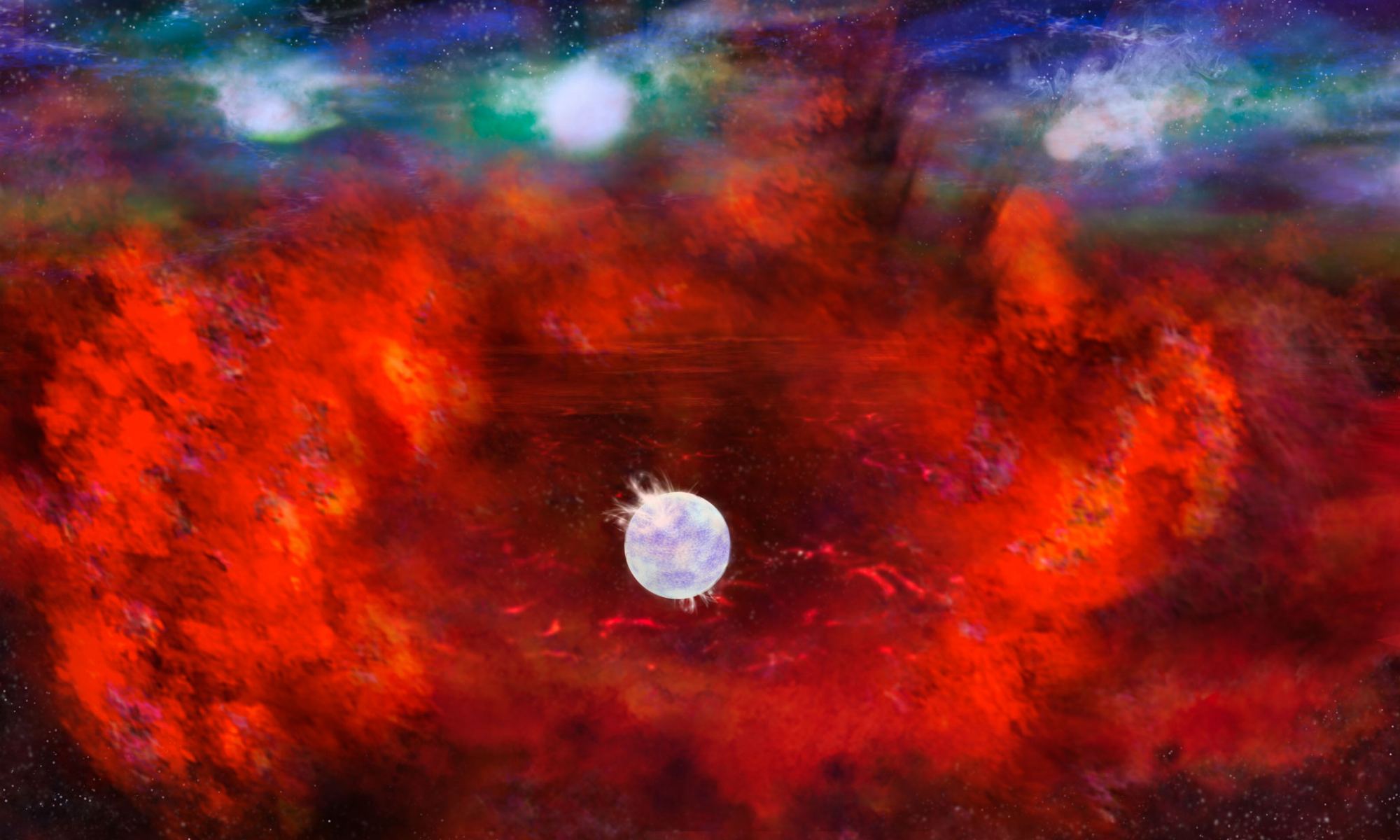It was the brightest supernova in nearly 400 years when it lit the skies of the southern hemisphere in February 1987. Supernova 1987A – the explosion of a blue supergiant star in the nearby mini-galaxy known as the Large Magellanic Cloud – amazed the astronomical community. It offered them an unprecedented opportunity to observe an exploding star in real-time with modern instruments and telescopes. But something was missing. After the supernova faded, astronomers expected to find a neutron star (a hyper-dense, collapsed stellar core, made largely of neutrons) left-over at the heart of the explosion. They saw nothing.
Continue reading “Astronomers Think They’ve Found the Neutron Star Remnant Left Behind from Supernova 1987A”Astronomers Think They’ve Found the Neutron Star Remnant From Supernova 1987a
In 1987, astronomers witnessed a spectacular event when they spotted a titanic supernova 168,000 light-years away in the Hydra constellation. Designated 1987A (since it was the first supernova detected that year), the explosion was one of the brightest supernova seen from Earth in more than 400 years. The last time was Kepler’s Supernova, which was visible to Earth-bound observers back in 1604 (hence the designation SN 1604).
Since then, astronomers have tried in vain to find the company object they believed to be at the heart of the nebula that resulted from the explosion. Thanks to recent observations and a follow-up study by two international teams of astronomers, new evidence has been provided that support the theory that there is a neutron star at the heart of SN 1604 – which would make it the youngest neutron star known to date.
Continue reading “Astronomers Think They’ve Found the Neutron Star Remnant From Supernova 1987a”First-Ever High Resolution Radio Images of Supernova 1987A
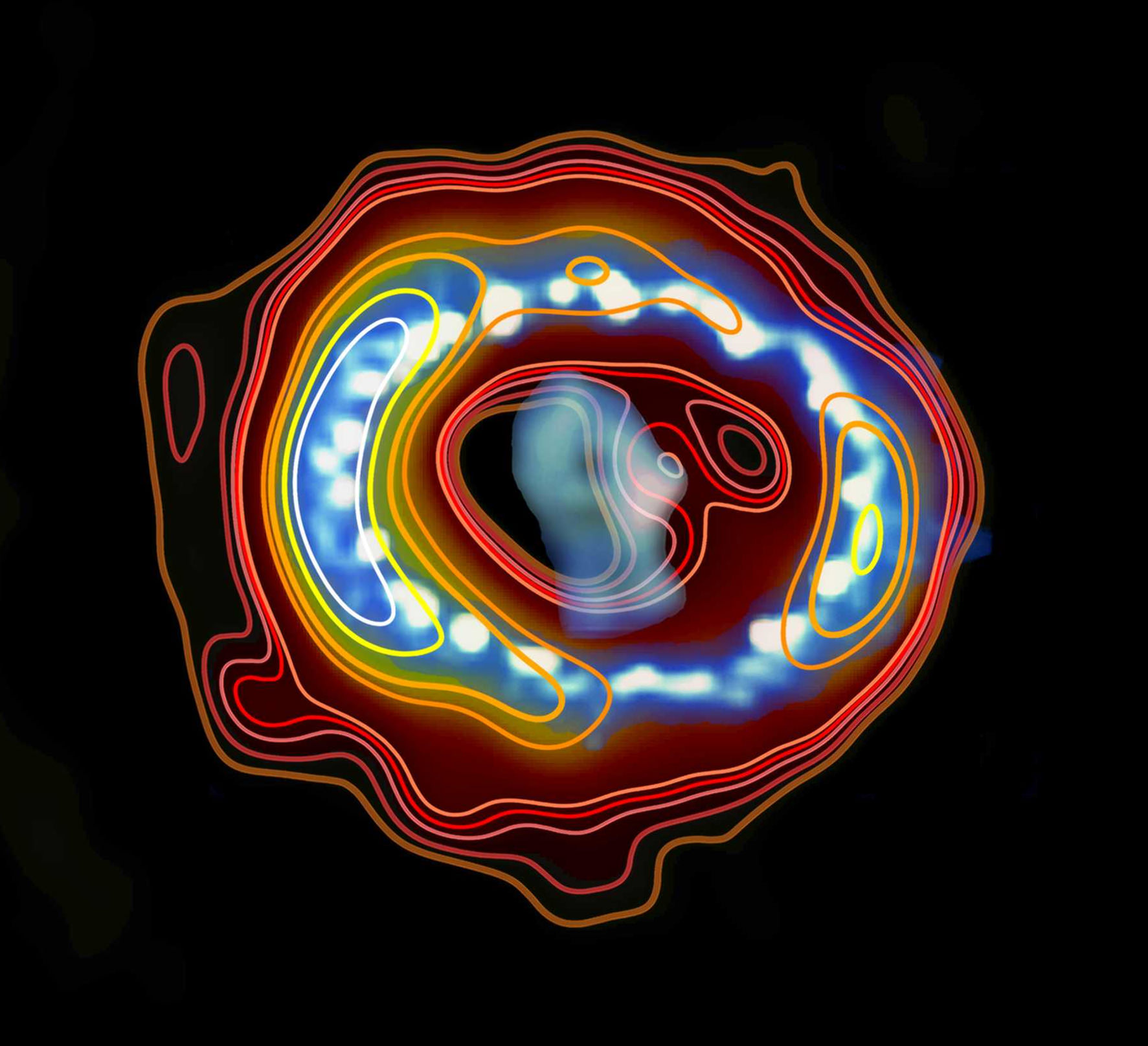
On February 23, 1987, the brightest extragalactic supernova in history was seen from Earth. Now 26 years later, astronomers have taken the highest resolution radio images ever of the expanding supernova remnant at extremely precise millimeter wavelengths. Using the Australia Telescope Compact Array radio telescope in New South Wales, Australia, Supernova 1987A has been now observed in unprecedented detail. The new data provide some unique imagery that takes a look at the different regions of the supernova remnant.
“Not only have we been able to analyze the morphology of Supernova 1987A through our high resolution imaging, we have compared it to X-ray and optical data in order to model its likely history,” said Bryan Gaensler, Director of CAASTRO (Centre for All-sky Astrophysics) at the University of Sydney.
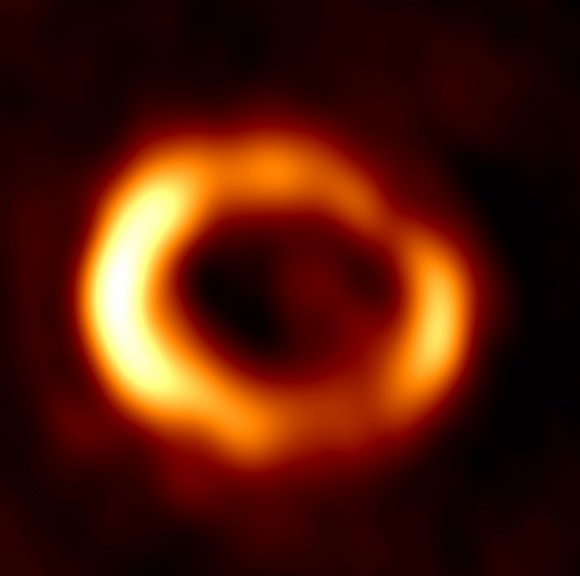
Radio image of the remnant of SN 1987A produced from observations performed with the Australia Telescope Compact Array (ATCA).
SN 1987A has been on one of the most-studied astronomical objects, as its “close” proximity in the Large Magellanic Cloud allows it to be a focus for researchers around the world. Astronomers says it has provided a wealth of information about one of the Universe’s most extreme events.
“Imaging distant astronomical objects like this at wavelengths less than 1 centimetre demands the most stable atmospheric conditions,” said lead author, Giovanna Zanardo of ICRAR, the International Center for Radio Astronomy Research. “For this telescope these are usually only possible during cooler winter conditions but even then, the humidity and low elevation of the site makes things very challenging,”
Unlike optical telescopes, a radio telescope can operate in the daytime and can peer through gas and dust allowing astronomers to see the inner workings of objects like supernova remnants, radio galaxies and black holes.
“Supernova remnants are like natural particle accelerators, the radio emission we observe comes from electrons spiraling along the magnetic field lines and emitting photons every time they turn. The higher the resolution of the images the more we can learn about the structure of this object,” said Professor Lister Staveley-Smith, Deputy Director of ICRAR and CAASTRO.
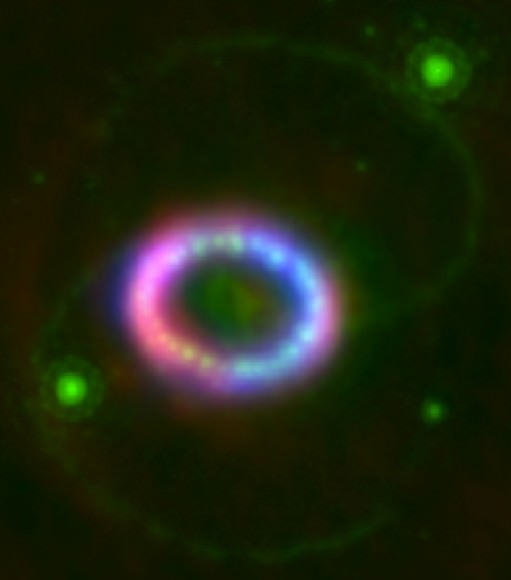
A Red/Green/Blue overlay of optical, X-Ray and radio observations made by 3 different telescopes. In red are the 7-mm (44GHz) observations made with the Australian Compact Array in New South Wales, in green are the optical observations made by the Hubble Space Telescope, and in blue is an X-ray view of the remnant, observed by Nasa’s space based Chandra X-ray Observatory.
Scientists study the evolution of supernovae into supernova remnants to gain an insight into the dynamics of these massive explosions and the interaction of the blast wave with the surrounding medium.
The team suspects a compact source or pulsar wind nebula to be sitting in the centre of the radio emission, implying that the supernova explosion did not make the star collapse into a black hole. They will now attempt to observe further into the core and see what’s there.
Their paper was published in the Astrophysical Journal.
Source: ICRAR
Supernova Spews Its Guts Across Space
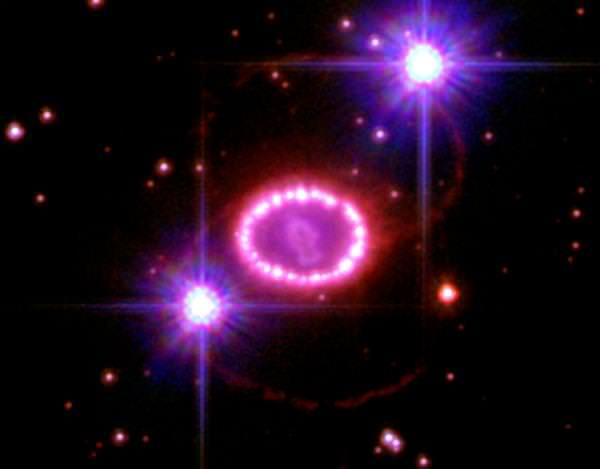
The recently refurbished Hubble Space Telescope has taken a new look at Supernova 1987A and its famous “String of Pearls,” a glowing ring 6 trillion miles in diameter encircling the supernova remnant. The sharper and clearer images are allowing astronomers to see the “innards” of the star being ejected into space following the explosion, and comparing the new images with ones taken previously provides a unique glimpse of a young supernova remnant as it evolves. They found significant brightening of the object over time, and also evident is how the shock wave from the star’s explosion has expanded and rebounded.
Kevin France from the University of Colorado Boulder and colleagues compared the new Hubble data on the SN1987A taken in 2010 with older images, and observed the supernova in optical, ultraviolet and near-infrared light. They were able to look at the interplay between the stellar explosion and the ‘String of Pearls’ that encircles the supernova remnant. The gas ring — energized by X-rays — likely was spewed out about 20,000 years before the supernova exploded, and shock waves rushing out from the remnant have been brightening some 30 to 40 pearl-like “hot spots” in the ring — objects that likely will grow and merge together in the coming years to form a continuous, glowing circle.
[/caption]
“The new observations allow us to accurately measure the velocity and composition of the ejected ‘star guts,’ which tell us about the deposition of energy and heavy elements into the host galaxy,” said France, lead author of the study which was published in Science. “The new observations not only tell us what elements are being recycled into the Large Magellanic Cloud, but how it changes its environment on human time scales.”
The significant brightening that was detected is consistent with some theoretical predictions about how supernovae interact with the galactic environment surrounding them. Discovered in 1987, Supernova 1987A is the closest exploding star to Earth to be detected since 1604 and is located in the nearby Large Magellanic Cloud, a dwarf galaxy adjacent to our own Milky Way Galaxy.
In addition to ejecting massive amounts of hydrogen, 1987A has spewed helium, oxygen, nitrogen and rarer heavy elements like sulfur, silicon and iron. Supernovae are responsible for a large fraction of biologically important elements, including oxygen, carbon and iron found in plants and animals on Earth today, France said. The iron in a person’s blood, for example, is believed to have been made by supernovae explosions.
The team compared STIS observations in January 2010 with Hubble observations made over the past 15 years on 1987A’s evolution. STIS has provided the team with detailed images of the exploding star, as well as spectrographic data — essentially wavelengths of light broken down into colors like a prism that produce unique fingerprints of gaseous matter. The results revealed temperatures, chemical composition, density and motion of 1987A and its surrounding environment, said France.
Since the supernova is roughly 163,000 light-years away, the explosion occurred in roughly 161,000 B.C., said France. One light year is about 6 trillion miles.
“To see a supernova go off in our backyard and to watch its evolution and interactions with the environment in human time scales is unprecedented,” he said. “The massive stars that produce explosions like Supernova 1987A are like rock stars — they live fast, flashy lives and die young.”
France said the energy input from supernovae regulates the physical state and the long-term evolution of galaxies like the Milky Way. Many astronomers believe a supernova explosion near our forming sun some 4 to 5 billion years ago is responsible for a significant fraction of radioactive elements in our solar system today, he said.
“In the big picture, we are seeing the effect a supernova can have in the surrounding galaxy, including how the energy deposited by these stellar explosions changes the dynamics and chemistry of the environment,” said France. “We can use this new data to understand how supernova processes regulate the evolution of galaxies.”
France and his team will be looking at Supernova 1987A again with Hubble’s Cosmic Origins Spectrograph, an instrument which scientists hope will help them better understand the “cosmic web” of of material permeating the cosmos and learn more about the conditions and evolution of the early universe.
Source: ScienceExpress


